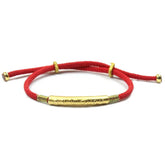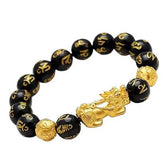9 Spiritual Protection Symbols and Their Meanings
Throughout history, spiritual protection symbols have maintained their significance and power, serving as potent tools for safeguarding individuals. These symbols, spanning ancient civilizations to modern times, offer pathways to deepen our intuition and fortify ourselves against harm.
This article delves into 9 influential symbols, elucidating how each can augment your life with an additional shield of security. By comprehending the profound meanings behind these sacred emblems, you can uncover a realm of potential and heightened awareness.
Hamsa Hand
The Hamsa Hand, a symbol prevalent in Islamic and Jewish cultures, takes the form of an open palm believed to embody the Hand of God. Traditionally depicted with five fingers pointing upward, it signifies protection from harm. Often adorned with an eye at its center, symbolizing the all-seeing eye of God, the Hamsa also serves as a defense against malevolent forces.
Evil Eye
The concept of the evil eye traces back to an ancient superstition suggesting that envy-filled glances can harm others. It's perceived as a curse capable of bringing misfortune and bad luck to its target. Typically depicted as an eye-like shape, often in blue or green hues, the evil eye is believed to counteract the negative effects of this curse. It serves as a symbol of protection, bringing good luck to those who wear or receive it.
Eye of Horus
The Eye of Horus holds ancient significance in Egyptian culture as a symbol of protection. Often portrayed as a blue or green eye adorned with winged eyeliner, it symbolizes the omniscient eye of the deity Horus.
Originally, this symbol served to ward off malevolent forces, offering protection. Beyond its protective role, the eye also represented royal authority and strength, embodying the might of Egyptian rulers.
Om Symbol
The Om symbol, also known as Pranava or Aum, has its origins in Hinduism, Jainism, and Buddhism. This ancient Sanskrit symbol is formed by combining the letters "a," "u," and "m."
Om symbolizes the eternal energy of the universe, encapsulating concepts of peace, truth, and divine power. It serves as a profound invocation during meditation, invoking spiritual feelings and connecting practitioners with higher realms of consciousness.
Star of David
The Star of David, also known as the Hexagram, is a six-pointed star deeply rooted in Jewish culture. Symbolizing the protection of God, it is prominently featured on necklaces, pendants, menorahs, and various other Jewish symbols.
Dragon
The dragon holds deep significance in Chinese culture and mythology, where it is revered as a divine and mythical creature embodying immense power, luck, and prosperity. Typically depicted as a long, serpent-like creature adorned with scales, the dragon features four legs and a pair of wings. Its form symbolically represents the nine astrological influences of ancient China. Across Chinese tradition, the dragon symbolizes strength, courage, and profound wisdom.
Cross
The cross has ancient origins, initially serving as a religious symbol in worship of diverse gods and goddesses. Its fundamental design comprises two intersecting lines: one vertical and one horizontal, creating the familiar cross shape. By the 4th century, the cross became prominently associated with Christianity, symbolizing the crucifixion of Jesus Christ. Beyond Christianity, the cross holds various cultural meanings, representing spiritual protection, hope, resilience, and strength in different societies.
Phoenix
The Phoenix has its roots in Egyptian mythology, where it symbolizes resurrection and immortality.
Described with the body of a lion, the head of a hawk, and the tail of a snake, the Phoenix is revered as a symbol of renewal, hope, and good fortune.
Across various cultures, it embodies themes of strength, courage, and profound transformation.
Yin Yang
The concept of Yin Yang originates from ancient Chinese Taoist philosophy, believed to have emerged around the 6th century BC.
Symbolized by a circular shape divided into black and white halves by a curved line, Yin Yang illustrates the dualistic nature of existence.
It signifies the harmony and interdependence of opposing forces in the universe, demonstrating how contrasts like light and dark, male and female, and hot and cold are interconnected and complementary.
Also read:
Understanding The Yin Yang Symbol In Chinese Culture
How Protection Symbols Work?
Different perspectives exist regarding how these symbols function. Some assert that they tap into positive energy, enveloping the wearer in a shield of positivity and safeguarding against harm. Conversely, others suggest that these symbols deflect or repel negative energy, thereby reducing susceptibility to malevolent forces or ill intentions.
Wrapping Up
Spiritual protection symbols serve as potent tools to aid us in life's journey. Delve into the meanings of these symbols and discover one that deeply resonates with you. Embrace their power as you navigate your daily life, finding solace in the knowledge that they stand ready to protect you when most needed.










Leave a comment
All blog comments are checked prior to publishing